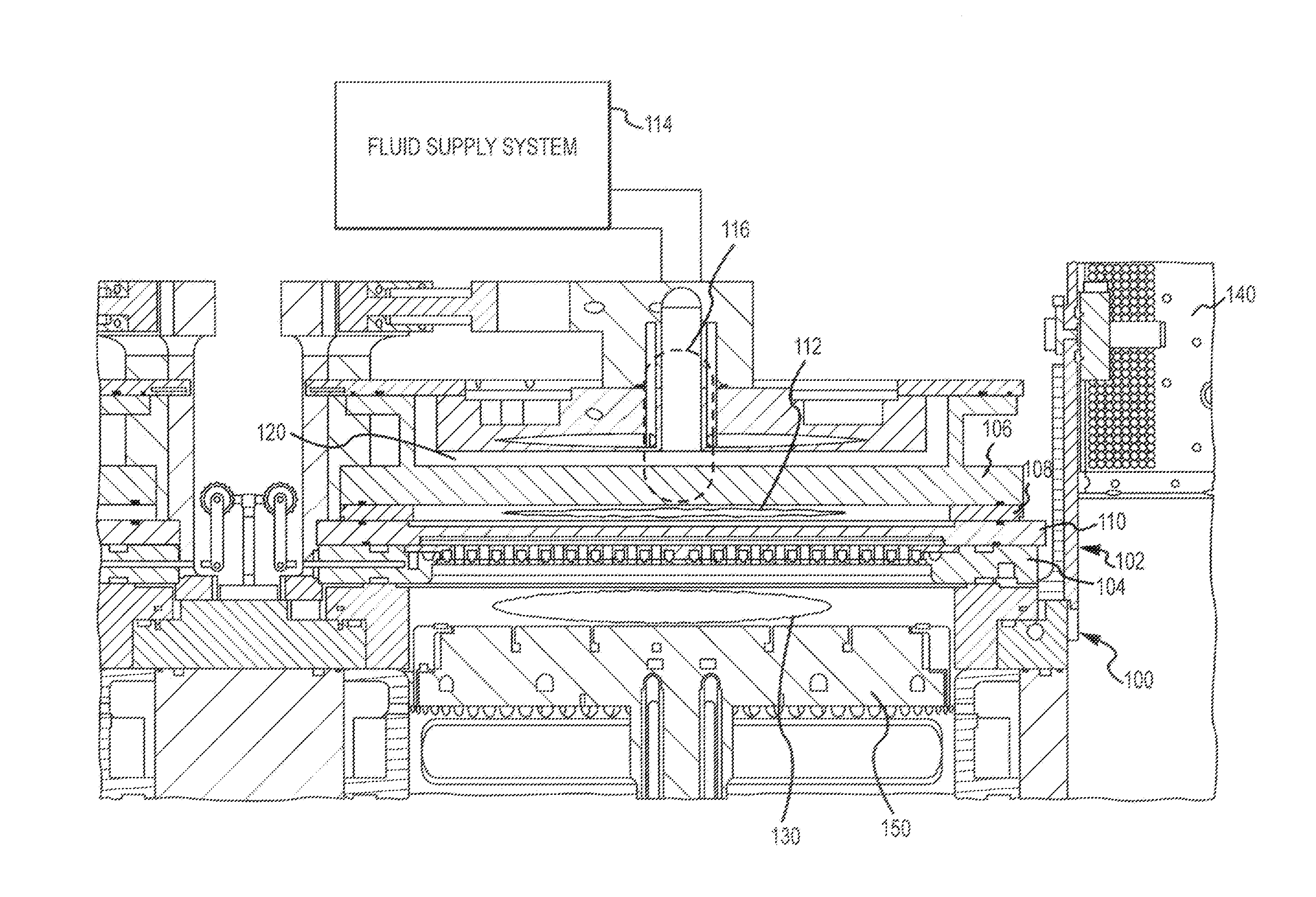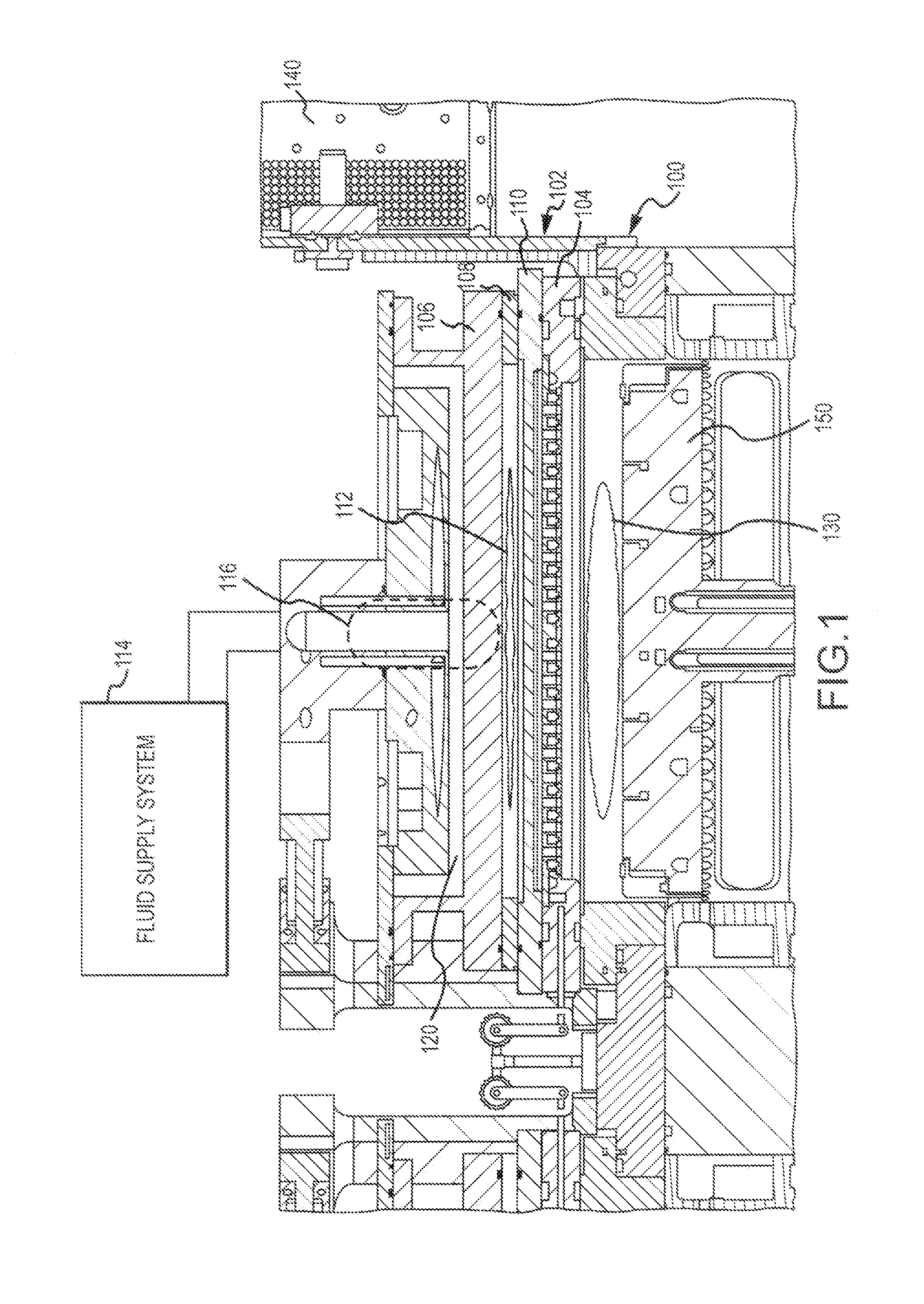Semiconductor processing system and methods using capacitively coupled plasma
a processing system and capacitively coupled technology, applied in the field of semiconductor processing system and capacitively coupled plasma, can solve the problems of reducing the etching rate, affecting the material's performance, and creating fabrication challenges, so as to improve the control of the environment, reduce or eliminate the number of ionically charged species, and precise control of the etching rate
- Summary
- Abstract
- Description
- Claims
- Application Information
AI Technical Summary
Benefits of technology
Problems solved by technology
Method used
Image
Examples
Embodiment Construction
[0023]Systems and methods are described for the generation and control of a plasma inside a semiconductor processing chamber. The plasma may originate inside the processing chamber, outside the processing chamber in a remote plasma unit, or both. Inside the chamber, the plasma is contained and separated from the substrate wafer with the help of an ion suppression element that is positioned between the plasma and the substrate wafer. In some instances, this ion suppression element may also function as part of a plasma generation unit (e.g., an electrode), a gas / precursor distribution system (e.g., a showerhead), and / or another component of the processor system. In additional instances, the ion suppression element may function primarily to define a partition between a plasma generation region and a gas reaction region that etches and / or deposits material on exposed surfaces of the substrate wafer.
[0024]The ion suppression element functions to reduce or eliminate the amount of ionicall...
PUM
| Property | Measurement | Unit |
|---|---|---|
| pressure | aaaaa | aaaaa |
| temperatures | aaaaa | aaaaa |
| temperatures | aaaaa | aaaaa |
Abstract
Description
Claims
Application Information
 Login to View More
Login to View More - R&D
- Intellectual Property
- Life Sciences
- Materials
- Tech Scout
- Unparalleled Data Quality
- Higher Quality Content
- 60% Fewer Hallucinations
Browse by: Latest US Patents, China's latest patents, Technical Efficacy Thesaurus, Application Domain, Technology Topic, Popular Technical Reports.
© 2025 PatSnap. All rights reserved.Legal|Privacy policy|Modern Slavery Act Transparency Statement|Sitemap|About US| Contact US: help@patsnap.com



